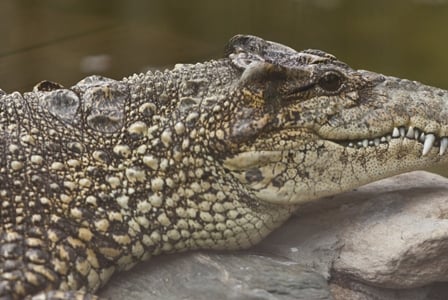
On this Wildlife Wednesday, were learning about the Cuban crocodile. Warning: they jump.
They’re snarky, long-lived, and unusually well adapted for a stroll on land. On this Wildlife Wednesday, let’s learn about Cuban crocodiles … from a safe distance.
Habitat
Cuban crocodiles can, oddly enough, be found in Cuba. More specifically, they’re restricted to the freshwater marshes and watery shrub lands of the island nation’s Zapata and Lanier Swamps.
Trivia
- With strong back legs and only partially webbed toes, these scaly swimmers are actually suited quite well for land.They’re known to be quick, agile, and to make flying leaps at prey.
- Speaking of prey, these crocodiles make a meal of the exact things that you might expect an oversized, ill-tempered reptile to eat—birds, amphibians, fish, invertebrates, and other reptiles.
- However, they’re uniquely adapted to control local turtle populations. They have broad back teeth that are specifically adapted for crushing the shells of the small, shelled reptiles.
- Whatever you do, don’t annoy these crocs. They’re known for having a rather bad temper and, like most crocs, have a rather long lifespan. Researchers suspect that they can live for up to 75 years.
Why are they threatened?
Unfortunately, not even big teeth and a face that even a mother couldn’t love keeps these reptiles safe—their population has gone through a dramatic decline over the past few decades, with some numbers putting that population decline at more than 80 percent.
In the past, the crocs were found in the Bahamas and the Cayman Islands. However, their population dwindled as a result of habitat destruction for agriculture uses, as well as overhunting and the introduction of the American crocodile.
Poaching has increased greatly since the 90s in order to keep up with demand from restaurateurs selling to tourists and from local populations and has heralded a marked decline in the reptiles’ population.
American crocodiles, meanwhile, pose a rather different threat. Instead of fighting each other, it turns out that the two reptiles can breed. It’s the resulting Cuban-American crocodile hybrids that threatened the biological distinctiveness of their parents.

















